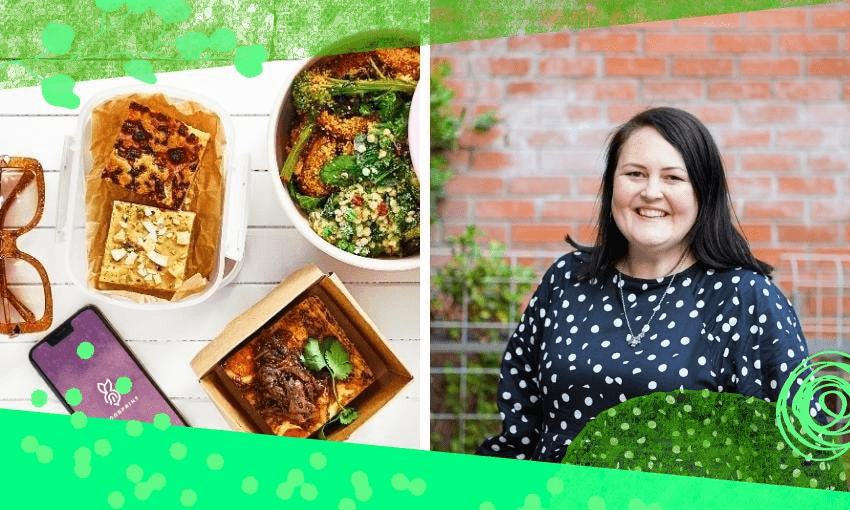Turns out you can have your cake and prevent emissions too. Ellen Rykers talks to Foodprint founder Michal Garvey.
This is an excerpt from our weekly environmental newsletter Future Proof – sign up here.
When I was a student in Dunedin, the best time to visit the café across the road was around 3.30pm in the afternoon – when the last of the day’s cheese scones were up for grabs for cheap, or even for free.
“The average eatery has around 1,000kg of surplus food per year. And it’s worth around $10,000,” says Michal Garvey, founder and director of Foodprint.
Saving this extra food from ending up in landfill isn’t just a bonus for small businesses. It’s a climate solution too.
When wasted food is sent to landfill, it rots and releases methane – a potent, planet-heating gas. Plus, there are all the carbon emissions that went into growing and making the food in the first place. All up, one kilogram of wasted food emits greenhouse gases equivalent to 2.6 kg of carbon dioxide. When you consider that a third of the world’s food is never eaten, that’s a helluva lot of emissions. It also leaves a helluva lot of potential for cutting emissions: reducing food waste is one of the most impactful climate actions we can take, according to Project Drawdown.
But moseying over to your local café every afternoon in hopes of a cheap treat isn’t the most efficient way of reducing food waste. That’s where the Foodprint app comes in: eateries can list their surplus or imperfect food at a discount on the app, and customers can snag a deal. “Eateries list items on the app for a discount from 30% off the regular retail price. Sometimes there’s stuff for free, and a lot of the time the discounts are up around 70-80%,” Garvey explains. “As a customer, you can receive push notifications from your favourite eatery.”
Garvey was inspired to start Foodprint after seeing similar apps in action while living in Scandinavia. Since launching in June 2019, Foodprint has expanded to 350 eateries across New Zealand, including bakeries, delis, sushi shops and cafés.
Food rescued via the app has prevented 115,000 kg of carbon emissions. Eateries and individuals can see their personal emissions savings via the app too. “You get to feel really good knowing that you’re eating cake that you’ve saved from landfill where it would emit methane and contribute to the climate crisis,” says Garvey.
“In both a cost-of-living crisis and a climate crisis, there is simply no good reason to be wasting food or the money it’s worth. So we’re really proud to be able to keep that money with small New Zealand businesses, and keep food out of landfill.”
Foodprint is continuing to roll out across new locations, coming to Tauranga in early November. “I would love to get Foodprint operating right across Aotearoa,” says Garvey. “So no matter what town or city you’re in, no matter how big or small, you’ll be able to pull out your phone and rescue food.”
Read more in Future Proof:
